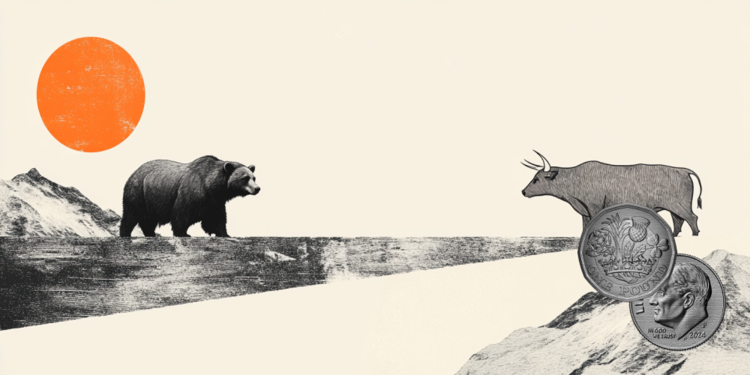Monkeypox is a disease caused by a virus called Monkeypox, similar to common smallpox (Smallpox), which belongs to the orthopoxvirus genus of the Poxviridae family.
The disease’s name originates from the initial discovery of the virus in monkeys in a Danish laboratory in 1958. However, the animal reservoir remains unknown, although it is likely to be among rodents, according to the World Health Organization (WHO).
In the current outbreak of the disease, which affects multiple countries, transmission occurs mainly from one person to another through close contact with injuries, body fluids, respiratory droplets and contaminated materials, such as bedding and bath linen.
“Monkeypox is a disease caused by a virus, which was first diagnosed and identified in the last century, that has nothing to do with monkeys. In fact, it was first identified in monkeys and, therefore, it became known in the scientific world as ‘monkey smallpox’”, says the Secretary of Health Surveillance at the Ministry of Health, Arnaldo Medeiros.
Changes in disease nomenclature
To avoid stigma and prejudice against infected individuals and situations of mistreatment against animals, scientists in the area advocate that the disease be named in Brazil exclusively as “monkeypox” (same name as the virus), since the current outbreak does not is related to primates.
“We need to stop naming monkeypox in that way, because it leads to an error of correlation with apes, with monkeys, and it has already been named Monkeypox by the World Health Organization and may undergo an update in the coming weeks,” says the president of the National Council of Health Secretaries (Conass), Nésio Fernandes.
This week, four black-tufted marmosets and a capuchin monkey were killed in the city of São José do Rio Preto, in São Paulo, with signs of intoxication. The attacks come amid an increase in monkeypox cases in the state of São Paulo and across Brazil.
“The name monkeypox is also used in the International Classification of Diseases (ICD-10). All this movement is aimed at avoiding deviations from surveillance and bad actions against animals”, explains Maria de Lourdes Oliveira, deputy director of the Oswaldo Cruz Institute (IOC/Fiocruz).
WHO studies changes in disease nomenclature
In June, the director general of the World Health Organization (WHO), Tedros Adhanom, said that the entity studies changes in disease nomenclature .
“WHO is also working with partners and experts around the world to rename the monkeypox virus, its clades and the disease it causes. We will make announcements about the new names as soon as possible,” Adhanom told the press on June 14.
Nonetheless, An official statement has not yet been issued. about the change by the WHO.
About 30 researchers from different countries published a letter to the global scientific community with an urgent request to change the name of the virus causing the disease.
“While the origin of the new global MPXV outbreak is still unknown, there is growing evidence that the most likely scenario is that human transmission between continents has been going on for longer than previously thought.” includes Brazilian virologist Tulio de Oliveira.
In the description of the disease, the WHO states that there are two groups (clades) of monkeypox virus: those from West Africa and those from the Congo Basin (Central Africa).
The expert group claims that the narrative contributes to linking the current multi-country outbreak to Africa.
“In the context of the current global outbreak, the continued reference and naming of this virus being African is not only inaccurate, but also discriminatory and stigmatizing,” the scientists say.
As an alternative, the scientists propose classifying three main clades of the virus: clades 1, 2 and 3, named in order of detection, including viral genomes from West Africa, Central Africa and events associated with the current outbreak in different countries.
In late July, the New York state government and the city government declared a public health emergency over the disease. On August 4, the United States also declared a health emergency over the outbreak of the virus.
The New York Department of Health and Mental Hygiene sent a craft to the WHO Director-General with a request to change the name of the disease. The document, signed by department commissioner Ashwin Vasan, states that the term “Monkeypox” can contribute to stigma and discrimination in “people of color” communities.
“NYC joins many public health experts and community leaders who have expressed their serious concern to continue to exclusively use the term “monkeypox” because of the stigma it can generate and the painful and racist history in which terminology like this is rooted for communities of color. ‘Monkeypox’ is a misnomer, as the virus does not originate in monkeys and was only classified as such due to an infection observed in research primates.
As an alternative, the document recommends adopting neutral languages such as “hMPXV” or “MPV”. “We need WHO leadership to ensure consistency in nomenclature and to reduce confusion for the public,” the text reads.

Documented virus impacts on animals
Several wild mammals have been identified as susceptible to monkeypox virus in areas that have previously reported monkeypox.
According to the WHO, the list includes squirrels, gambian rats, voles (a small animal that looks like a squirrel), non-human primates, among others.
While some species may have asymptomatic infection, others, such as monkeys and great apes, have skin rashes typical of those found in humans.
The WHO states that so far, there is no documented evidence of domestic animals affected by the Monkeypox virus. Furthermore, there is also no documented evidence of transmission from humans to animals. “However, this remains a hypothetical risk. Therefore, appropriate measures must be taken, such as:
Transmission and symptoms of the disease in humans
Monkeypox virus is transmitted from person to person through close contact with injuries, body fluids, respiratory droplets and contaminated materials such as bedding. The incubation period is usually 6 to 13 days, but can range from 5 to 21 days.
“The main form of protection is to avoid direct contact with infected people. Bearing in mind that the main form of transmission occurs through skin-to-skin, personal contact, or obviously through contact with personal objects of a patient who is infected with monkeypox”, says Arnaldo Medeiros, secretary of Health Surveillance at the Ministry of Health. Health.
In the most common documented form of the disease, symptoms may appear from the seventh day onwards with a sudden and intense fever. Signs such as headache, nausea, exhaustion, tiredness and especially the appearance of swollen glands are common, which can happen both in the neck and in the axillary region as well as in the genital part.
The manifestation on the skin occurs between one and three days after the initial symptoms. The signs go through different stages: macula (small spots), papule (small pimple-like sores), vesicle (small blisters), pustule (bubble with the presence of pus) and crust (which are the healing shells).
Source: CNN Brasil







